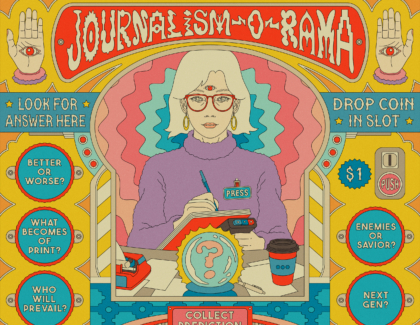Sign up for the daily CJR newsletter.
After a year-plus of discourse around journalism-industry “reckonings,” one of the few outlets that has effectively reoriented the way news is delivered is Prism, which aims to cover injustice from the perspective of “the people, places, and issues currently underreported by national media.” Started in June 2019 by a staff composed entirely of women of color, with freelance contributors primarily from oppressed groups, Prism soon found itself covering intersecting crises—a pandemic, police brutality, Black people murdered at the hands of white vigilantes—that all disproportionately devastated communities of color; plus, there was the presidential election. To Ashton Lattimore, Prism’s editor in chief, the combination of events made clear how her newsroom could offer what legacy publications did not. “I think we kind of came into an environment media-wise that was right for us,” she said.
Lattimore, who is thirty-four, joined the staff of Prism a few months after it launched. Its founder, Iara Peng, a nonprofit entrepreneur based in Oakland, developed the idea after talking with community organizers—conversations she came away from feeling frustrated that they’d been so consistently left out of major-media narratives. Peng then read a report by Color of Change, a civil rights advocacy nonprofit, about how national and local media tend to associate families of color, especially Black families, with poverty and criminality—and how that coverage has had consequences at the level of policy. When Markos Moulitsas, the founder of the Daily Kos, approached Peng about funding a nonprofit journalism venture, “I jumped at the chance,” she said. “Journalism is the everyday storytelling we tell ourselves as a society, and so this is the most powerful communication tool we have to really correct the record.”
Peng started mapping out markets and meeting reporters; she sought out people closest to the stories that Prism would cover. She also tapped justice organizers such as Patrisse Cullors, Mary Hooks, and LaTosha Brown to pair their subject-matter expertise with Prism’s editorial resources as part of a six-month fellowship program that would produce work for the site.
Doing so meant challenging some journalistic norms. “Immediately, when you build a newsroom that looks like the one that we built, people are questioning your objectivity,” Lattimore said. But objectivity is neither required nor desired at Prism. “The way that the idea of objectivity tends to be practiced is that people who are reporting the news are expected to stake out a position somewhere between two polar opposites,” she explained. “But because of the nature of what this country is, very frequently what people end up doing is trying to stake out a middle ground between white supremacy and the livelihood of Black people, Indigenous people, of other folks of color, as if those two positions are morally equivalent.” Consider the news surrounding the fight for a fifteen-dollar minimum wage, she pointed out: where traditional outlets have tended to frame it as a political contest between Democrats and Republicans, Prism has covered the story through the workers who have been organizing for years. “That’s just accurate,” Lattimore said.
Prism’s sensibility is most evident in the way it organizes beats: visitors to the site won’t find coverage filed under “politics,” “business,” or “health”; instead they’ll see “electoral justice,” “workers’ rights,” “gender justice,” and “racial justice.” Even those distinctions can be artificial—“It’s very unusual, for example, to have a gender justice story that’s not also a racial justice story,” Lattimore said—but organizing Prism that way speaks to its interest in centering collective organizing power. This approach is also directly tied to Prism’s revenue structure—zero of its money comes from media philanthropy. “I went to funders of social justice and said, ‘Hey, you’re funding all of these great organizations that do incredible work around the country, but no one knows what they’re doing,’ ” Peng recalled saying to potential benefactors. “ ‘Would you help me set up a vertical in gender justice?’ ”
Her appeal proved successful. The Libra Foundation, for one, provides grants for Prism’s gender justice coverage; the Ford Foundation does the same for workers’-rights coverage. These funds make up 67 percent of Prism’s revenue and are used to underwrite freelance work, pay staff writers, and cover overhead for the twelve people on staff. Prism was designed to operate remotely, so there’s no office to pay for; employees are scattered everywhere from Georgia and North Carolina to New York and California.
With a new administration in the White House that some major outlets are hailing as a “return to normal,” Lattimore believes that Prism’s mission remains no less urgent. “I think people sometimes mistake news outlets that are BIPOC-led as instruments of the political left, instruments of the Democratic Party, and that is very much not what it is,” she said. “The idea that because now a Democrat is in office our function as journalists changes somehow is not how we see it.” Recently, for instance, Tina Vásquez, a senior reporter, interrogated Joe Biden’s practice, during Black History Month, of deporting Black immigrants. “The goal is for our work and our style of reporting to be so disruptive to the industry that people cannot ignore it,” Lattimore said. “And that it fundamentally reshapes not just how we are reporting on communities of color—but that it forces other news outlets to rethink the way that they are doing journalism.”
ICYMI: Apocalypse Then and Now
Has America ever needed a media defender more than now? Help us by joining CJR today.







